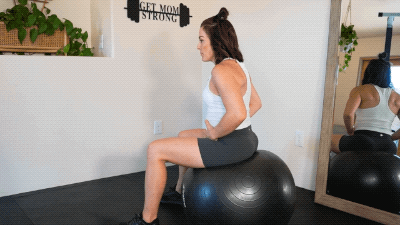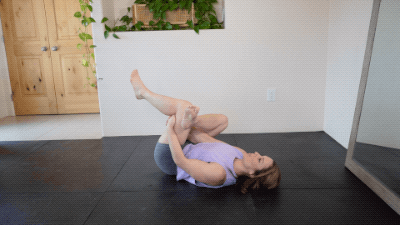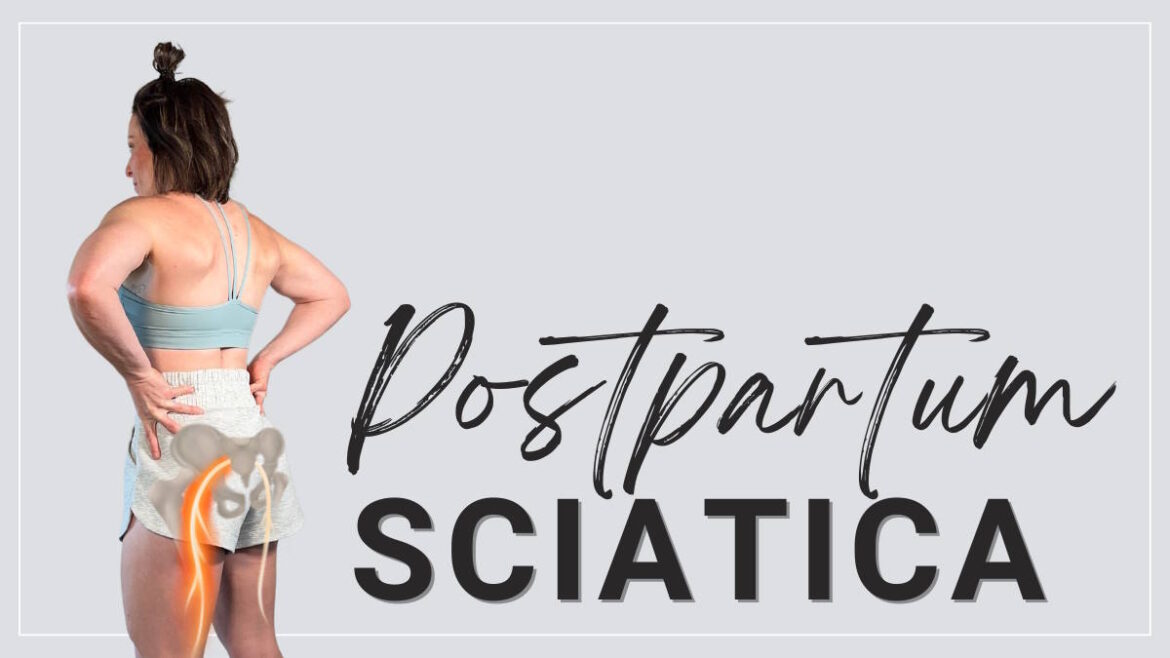Dealing with postpartum sciatica can be a real, um, pain in the butt.
If you feel radiating pain, tingling, or numbness starting in your lower back or deep glutes that travels down the leg, you might have sciatic nerve pain.
The sciatic nerve is the longest and thickest nerve in the body. It begins in your lower back and splits into two, down the back of each leg. Sciatica occurs when the sciatic nerve is compressed or pinched. It is a common condition. The Cleveland Clinic reports that about 40% of people in the U.S. experience some form of sciatica during their lifetime.
What is Postpartum Sciatica, and Will it Go Away?
When you’re pregnant, hormones cause a loosening of ligaments and connective tissue. This makes your body more flexible and prone to problems like pinched nerves. And since the body makes adjustments during pregnancy and the postpartum period, you’re more likely to experience sciatica.
Fortunately, most mild cases of postpartum sciatica usually improve on their own within the first few months after delivery. Self-treatment options include stretching and strengthening the muscles around the painful area.
However, if left untreated, sciatica can lead to serious problems in the long-term, including permanent nerve damage or muscle weakness.
As always, please seek treatment from a physical therapist or other medical professional if your pain or other symptoms are severe.
How to Relieve Sciatica and Pelvic Pain after Birth
Following are tips to improve and help prevent a *literal* pain in the butt.
Stretching
Complete each of these stretches for 30 – 60 seconds on each side. Push yourself, but don’t HURT yourself. This should provide pain relief, and not be painful.
- Pelvic area: Complete pelvic tilts and circles while sitting on a chair or exercise ball. This helps you relax and connect with the pelvic floor and helps with posture.

- Hamstrings: Lay on your back, with your butt against a wall. Stretch your legs up the wall to feel a gentle stretch along the back of your thighs. You can gently pull one leg at a time toward your head for a deeper stretch.

- Piriformis (deep side butt muscle): Sit on a chair or lie on your back and bring your ankle to the opposite knee to forma figure four. Bend forward if you’re sitting or pull the knee and ankle in toward your shoulder to feel a stretch in your side glutes.

- Calf Stretches: Stand with toes facing forward, one leg forward, one back. Lean into the wall to feel a stretch along your lower leg. Switch sides.
- Lower Back: Lay on your back and hug your knees into your chest. Exhale and relax, rocking side to side to release your lower back.
- Nerve Glides/Nerve Flossing: Lie on your back and wrap a strap around the bottom of one foot. Stretch your leg up so it’s perpendicular to the floor and slowly point and flex your ankle several times. You should feel a gentle pull along the back of your entire leg.
Preventing Sciatica with Movement and Strength
Stretching will help with sciatica symptoms, but you can also work on strengthening and connecting with your core, pelvic floor, and lower body to prevent sciatica pain in the future.
- Improve Your Posture: Find a good, neutral spine while sitting, standing, lifting heavy objects, and sleeping. This allows you to properly recruit your core muscles and prevents misalignment, muscle fatigue, and puts less stress on the lower back. Check yourself:
- Make sure your shoulders are over your hips when sitting. Your hips should be over your ankles when standing.
- If you’re standing, tripod it! Think about staggering your stance to form a stable “tripod” shape. You can also use a step or low stool under one foot to help stagger your weight.
- Strengthen Your Core: Rebuilding abdominal muscles after having a baby is important for so many reasons. Take time to learn to properly breathe and engage your core using the FREE Core Guide.
- Stay Active: From stretching to strength training, movement will help with sciatic pain. As the saying goes, “motion is lotion.”
Check out SLAM Stretch for more tips and information on moving your body during early postpartum days, reducing pain, increasing mobility, and helping support muscle strength.
